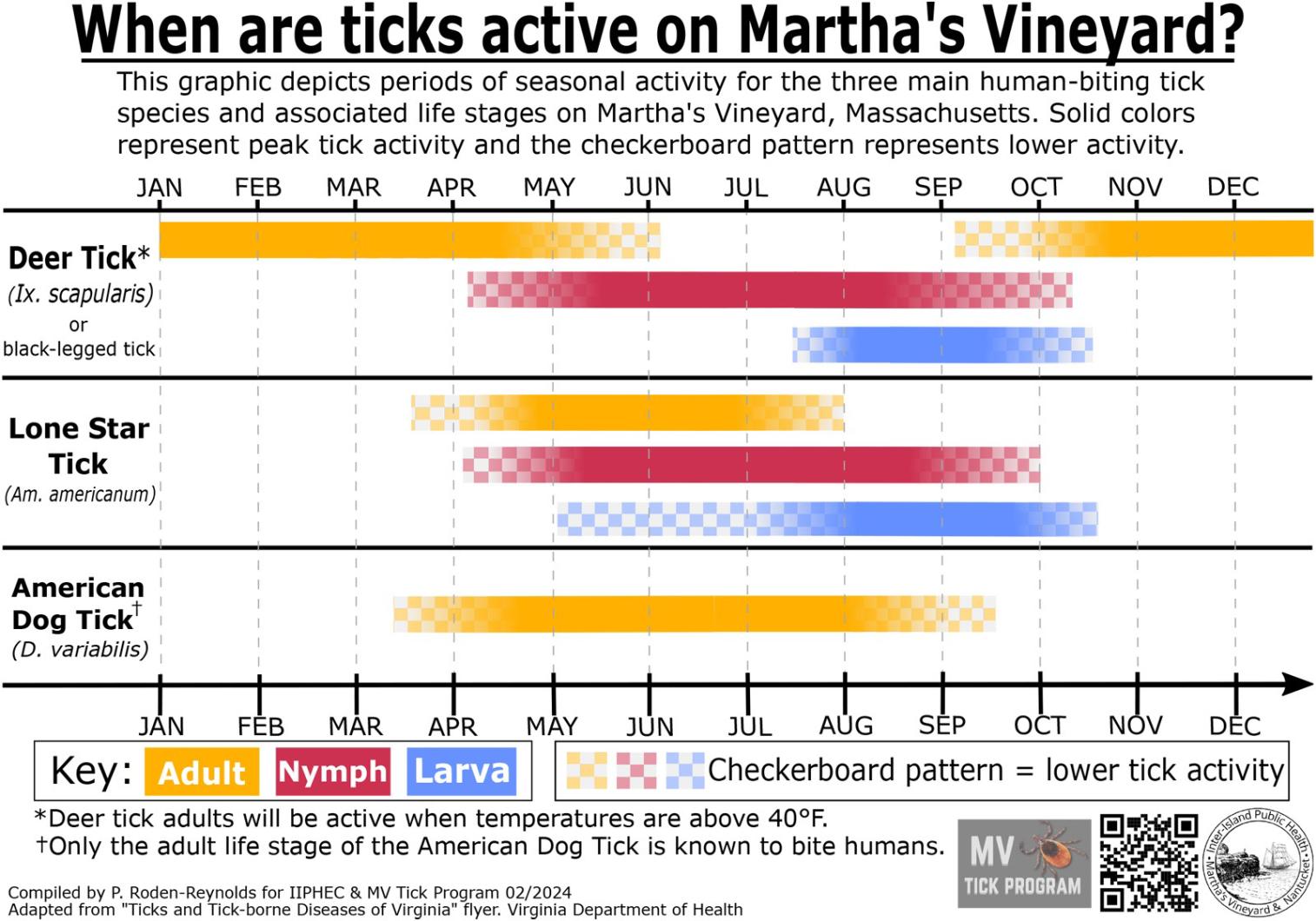There has been a rash of complaints across the Island.
Itchy bumps are appearing on Islanders and visitors alike and many folks want to know why. The social media pseudo-scientists think they have the answer, though I believe their diagnosis “mite” be a mistake.
The word on the screens is that we have an oak leaf itch mite infestation and that these little louts are causing all of the irritations (skin and otherwise). Not so fast, I say. Pyemotes herfi, or oak leaf itch mites, are an introduced species that have not yet been reported in New England.
Oak leaf itch mites arrived from Europe in the late 1990s and were detected in Kansas in 2004. Since then, they have been reported in Illinois, Nebraska, Ohio, Oklahoma, Missouri, Tennessee, Texas and Pennsylvania, though I could not find any sources that confirm their existence in Massachusetts. Nor could officials I reached out to.
Phu Mai, director of communications for the Massachusetts Department of Agricultural Resources, responded to my query saying: “We are not aware of any recorded presence of Pyemotes herfsi (oak leaf itch mite) anywhere in New England including Massachusetts.” Oak mites feed on midge fly larvae often found on pin and other oak trees, and can rain down in masses of 400,000 microscopic mites per day.
They also are known to feed on cicada eggs, so are being noted when periodic cicadas emerge. The mite mystery deepened as I searched for other mites that might be causing the calamine-requiring calamity. Perhaps it was a confused creature consensus and there was another mite to blame.
A mite that is found in Massachusetts is the oak spider or oak red mite, Oligonychus bicolor. This species can be problematic if you are a plant, but cannot bite humans, so are not responsible for the reports of the little blisters that accompany the scratchy skin.
Next up are chiggers, another species notable for leaving bumps and causing immense itching. They generally reside south of New England, however, Dr. Sam Telford, professor with the Department of Infectious Disease and Global Health at Tufts University, has recently confirmed the likelihood of chiggers in New England and is working on publishing his findings. But their presence is very localized and scientists suggests that chigger distribution would be rare/scattered in our region and very questionable on the Cape & Islands.
So what species is left? Unfortunately, the worst (and possibly most dangerous) of the itch-makers.
Lone Star ticks have been dramatically increasing on the Island, and the late summer and fall is the top time for their larval stage. Yes, the dreaded tick bombs are most likely the cause of the itchiness and irritation.
Patrick Roden-Reynolds, our Island tick expert and officially the biologist for the MV Tick program, agrees with my assessment that the likely culprits are Lone Star tick larvae. He notes that August and September are peak larval season, and while deer tick larvae can also bite, if you are seeing many bumps and bites (from a few up to 100) anywhere from the torso down, but usually on the ankles and groin, you’ve likely been the victim of those Lone Star larvae. Remember that the aforementioned oak leaf itch mites fall from the trees, so their bites are found above the waist on the neck, shoulders, arms, and chest, while Lone Stars come from the ground up.
And those Lone Star tick, nymphs and larva bites can cause sensitivity to alpha-gal and can lead to alpha-gal syndrome (AGS). Alpha-gal syndrome is an allergy to any mammal products (think meat and dairy plus many products and medicines with mammal-based ingredients) that can cause the skin irritation, stomach issues, and go as far as causing anaphylactic shock. Patrick adds that “larvae may pose a unique risk to AGS because you are likely to get MANY bites at once, but again there is no hard evidence to confirm. There is still no concern for contracting an infectious disease from Lone star larvae bites like Ehrlichiosis or Tularemia.”
If you or your family have the itch, be sure to get tested for alpha-gal and other tick-borne diseases. While I am not a doctor, my own itchy bites had me initially scratching my head, but now that I know the cause, I can only share that I am quite ticked off (if not mit-ily mad) and I blame those sons of itches.
Suzan Bellincampi is director of the Felix Neck Wildlife Sanctuary in Edgartown, and author of Martha’s Vineyard: A Field Guide to Island Nature and The Nature of Martha’s Vineyard.







Comments (12)
Comments
Comment policy »